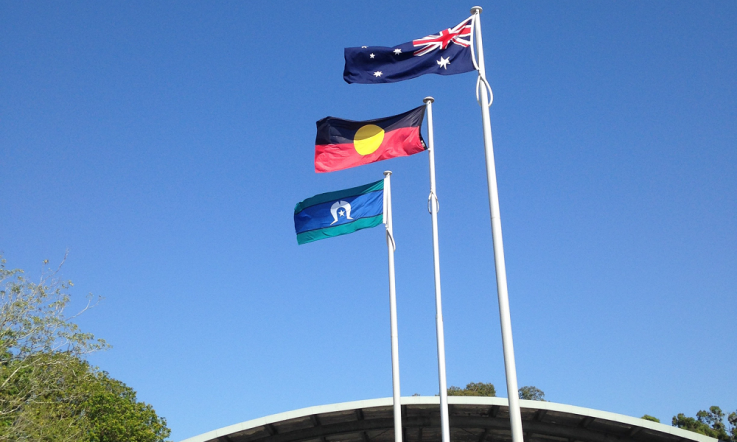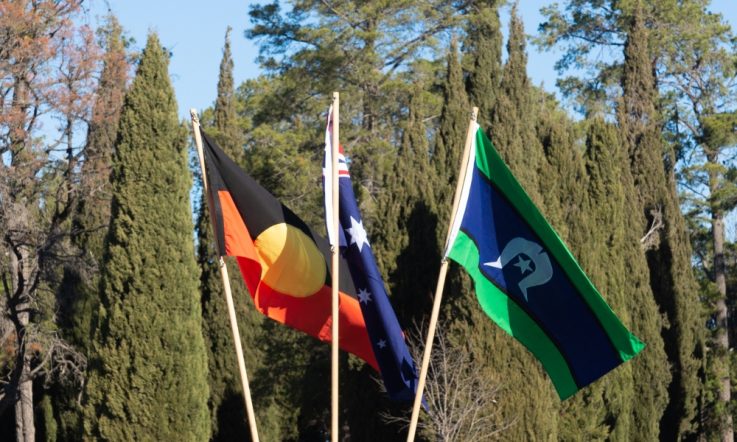Sharon Case is the Head of Curriculum and Japanese Language Teacher at Mossman State School in north Queensland and was recently named as a teaching fellow for the Commonwealth Bank Teaching Awards, presented in partnership with Schools Plus. She was recognised for her outstanding work in developing an Indigenous language program at the primary school through extensive collaboration with their Indigenous community.
All students now learn the local language, Kuku Yalanji, which was at risk of being lost, with only the Indigenous elders being able to speak it fluently. The introduction of this program has seen improvements in student attendance, behaviour and achievement and a stronger understanding of Indigenous culture has been developed. In this Q&A, Case explains how the language program was developed and the positive effects it's had on the entire school community.
Can you tell me a little bit about Mossman State School and your role there?
Mossman State School is a historically and culturally rich school, located in the semi-rural township of the Mossman community. Our school community embraces a wide representation of cultures, languages and lifestyles, which make up our student, parent and staff population. Approximately 50 per cent of our students identify as Aboriginal or Torres Strait Islanders.
I have two roles at the school, I am the Japanese language teacher and the Head of Curriculum (HOC). As part of the HOC role, I work with our whole school staff to ensure a consistency of practice across our school in all teaching and learning areas and alignment to the Australian Curriculum. I have worked closely with our Indigenous Community to develop an Indigenous Language Program aligned to the Australian Curriculum and our core teaching and learning pedagogy.
You collaborated with elders and leaders of the five local Aboriginal clans to develop the language program. What did this involve? Which staff were involved?
The 18-month community consultation process was the most critical component of the whole process and allowed for the building of strong foundations around the languages program. It came after many years of the principal and staff building strong relationships with community. The process of deliberate community engagement through a number of community consultation forums gave our Indigenous community the opportunity to have their say about teaching Kuku Yalanji at our school. The school was very much in the background at these forums as the community has ownership over their language and we wanted to value their skills, knowledge and wisdom.
As the consultation process continued, Indigenous Elder, Uncle Norm Tayley, and I collaborated to co-design the language program, aligned to the Australian Curriculum. A young Indigenous man, Mr Juan Walker, with a strong passion for his language was employed as a languages consultant to teach the language and a number of Elders helped support the language program in the classroom. The community celebrated the introduction of the language program with a huge cultural event at the school that was one of the biggest our school has ever hosted.
Consulting with the wider school community was clearly an integral part of getting this language program up and running. Does this community collaboration occur in other areas of the school, too?
Our school deliberately develops strong relationships with our community. We have an active P&C and strong parent involvement, particularly at our before school reading club and community playgroup. The school also has strong ties with sporting clubs in the community, including tennis, cricket, hockey and gymnastics. The journey towards our Indigenous Language Program certainly saw a significant increase in engagement and collaboration with our Indigenous community.
The Kuku Yalanji Language Advisory Group (KYLAG) is also an important part of this program. How was it formed and what do they do to oversee the language program?
The KYLAG was formed by the community, incorporating members from all five family groups of Kuku Yalanji people, in order to create a platform for our Indigenous community to be able to work within our school in overseeing the development of our Indigenous Language Program. The KYLAG meets monthly at our school and reviews all of the Kuku Yalanji units of work developed. They provide direction around topics to teach and specific language and cultural elements to include in each unit. The KYLAG has also worked to introduce adult language lessons into the community, organise community events and seek grants funding to support the language program and KYLAG.
Can you tell me about the language agreement with the Kuku Yalanji people? Why was this important to establish?
One of the first things the KYLAG did was to work with the school to develop a Languages Agreement, guaranteeing that the school will continue to support the teaching of Kuku Yalanji for years to come. This document was signed by the Indigenous community elders, the KYLAG and the school and provides validity and sustainability to the languages program and a commitment to continuing to value our Indigenous language, culture and people at our school.
Attendance, behaviour and achievement among students have improved. Why is this? Did you anticipate this would happen?
There were many positive outcomes that we hoped for and deliberately aimed for, when we first contemplated the introduction of an Indigenous language to our school curriculum. There were many other impacts that we could never have predicted.
Teaching and learning Kuku Yalanji at our school sends a clear message to our whole school community that we value our Indigenous people, culture and the deep Indigenous history of our local area. Our Indigenous students feel a sense of belonging at our school and a sense of pride that we teach their language and culture as part of our curriculum. This helps strengthen the identity, wellbeing and connections of our Indigenous students.
Our staff develop strong relationships with community, families and students and our students want to be here. The Kuku Yalanji languages program also develops, within all of our students, a deeper cultural understanding of our Indigenous people. This in itself helps strengthen and build positive relationships between all of the students in our school, which consequently improves student behaviour. This deeper cultural understanding is taken back to families too and I think that can be very powerful in a small community like ours.
Our enrolment has improved as more and more families see our school as a school of strong core values, meaningful relationships with an expert teaching team committed to providing a broad curriculum with compassion. We have had quite a number of non-Indigenous families enrol their students at our school because we offer an Indigenous language program. This was certainly something we did not foresee.
For other schools looking to enrich the connections with their Indigenous community, or even looking to start a language program of their own, what are some important first steps and considerations?
No effective Indigenous language program can occur without community engagement and authentic consultation right from the beginning. Our principal, Mr Randal Smith, always says that, ‘everyone has a story to tell, everyone wants to tell that story and everyone wants to have that story heard'. Schools need to intentionally build strong, authentic relationships with all community members built on trust, so that people are able to tell their own truths. We have asked our First Australians to learn our ways for over 200 years, it's our turn to learn from our Indigenous people and they have a wealth of knowledge to share with us.
Teaching an Indigenous language program should be an integral part of any school curriculum. Language is a tool that empowers our Indigenous people and preserves our historically rich languages and cultures. Learning Indigenous languages strengthen student identity and wellbeing and is a right of our Indigenous people. Learning languages makes our students, our families and our communities stronger and connects us all to our country and its rich history. It is righteous, it is responsible, it is respectful, it is reciprocal and it is reconciliatory.
Sharon Case said: ‘Teaching and learning Kuku Yalanji at our school sends a clear message to our whole school community that we value our Indigenous people, culture and the deep Indigenous history of our local area.’
Think about your school context. What message are you sending to the community about how much you value the Indigenous knowledge, culture and history of your local area? What are you already doing well in this area, and what could be improved?



